People
‘I Want to Be Able to Maintain My Clear Voice’: Artist Christine Sun Kim on Translating Her 2020 Into Trenchant New Drawings
Her new exhibition "Trauma, LOL" explores the elegance of ASL and the trauma experienced by the Deaf community.
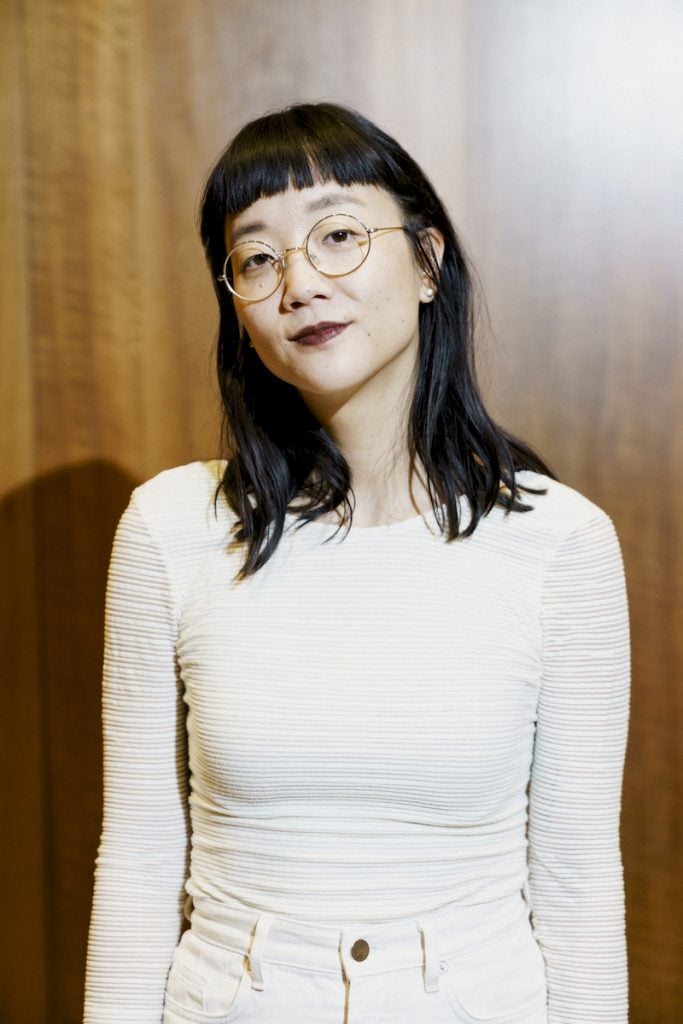
Her new exhibition "Trauma, LOL" explores the elegance of ASL and the trauma experienced by the Deaf community.

Kate Brown

Christine Sun Kim was at her extended family’s annual Christmas dinner in California last year when she snapped. The 40-year-old artist, who was born Deaf, realized she was being left out of the group’s conversation because several family members would not learn or use sign language or her texting app.
It wasn’t an entirely new feeling for Kim, but in that moment, she looked over and saw her small child Roux, who is hearing, surveying the situation. Kim made a choice: She was not going to subject herself to this kind of mistreatment anymore.
“I don’t want that kind of model of behavior for my daughter,” the Berlin-based artist told me over a video call with one of her longtime interpreters, New York-based Beth Staehle. “In my art career, people pay to come see my work. I’m an activist. I’m an empowered woman, but in my family, I’m not. I’m less than. That experience is very common for Deaf people.”
A work on view in Kim’s latest exhibition, which opened on December 12 at Los Angeles’s François Ghebaly, references her experience at that Christmas dinner. There is a word for it in the Deaf community: “dinner-table syndrome.” Annotated as a layered table, the words are squished between the lines, barely finding room.
The Ghebaly exhibition (which opened a week later than scheduled due to public-health measures in LA and is now temporarily closed again) is her first dedicated entirely to drawings. It’s medium Kim has explored alongside video and performance for her entire career, and one that was showcased in the 2019 Whitney Biennial. During lockdown, however, it has become even more central to her practice.
Kim’s black-and-white sketches illustrate aspects of Deaf experience in ways that are barbed, witty, and provocative. They invite you in with pie charts, line graphs, and smilie faces—it’s only when you get closer that you realize these deceptively simple images are crystallizing and complicating circumstances familiar to members of the Deaf community, from “Deaf rage” to “sh*t hearing people say.”
“People responded to me saying, ‘I’m not Deaf, but as a woman, I feel these rages too,'” Kim said. “It’s great when people can recognize a format and be able to respond and bring in their own experiences.”
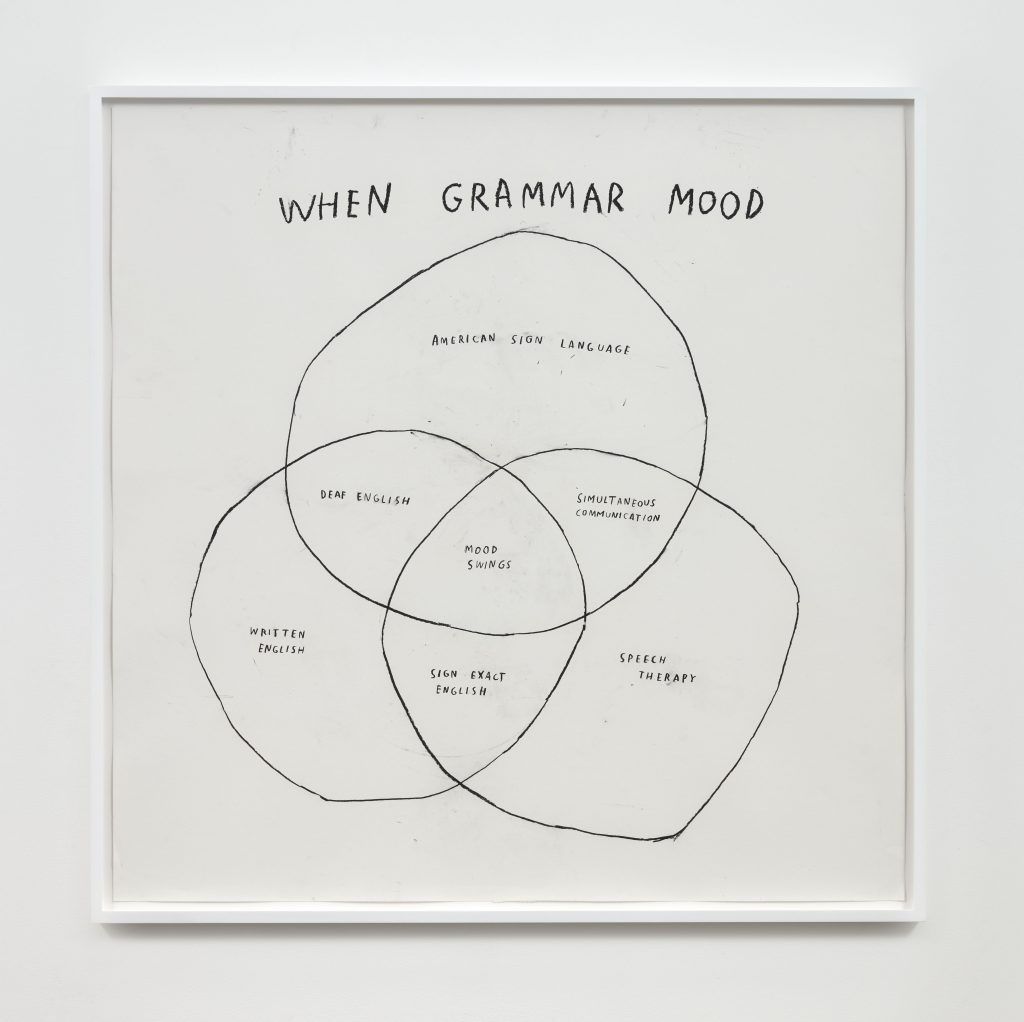
Christine Sun Kim When Grammar Mood (2020). Courtesy of the Artist and François Ghebaly, Los Angeles. Photo: Paul Salveson
Kim’s year started off as a whirlwind. In February, she performed the national anthem in American Sign Language (ASL) at the Super Bowl in Miami before touching down, rapid-fire, in four other cities for various projects. She returned to Berlin to unveil two large murals at the German Opera. As visitors ascend one staircase, they read her words: “The sound of another night sinking into existence.”
The day after she debuted the murals, Berlin went into lockdown. With her busy travel schedule suspended, Kim continued working in her home studio and showed new works this fall at the Hamburger Bahnhof in Berlin. (One large drawing includes verses from The Star-Spangled Banner, which Kim adapted into musical notation from the ASL translation of the song she did for the Super Bowl, as opposed to from the English-language version.)
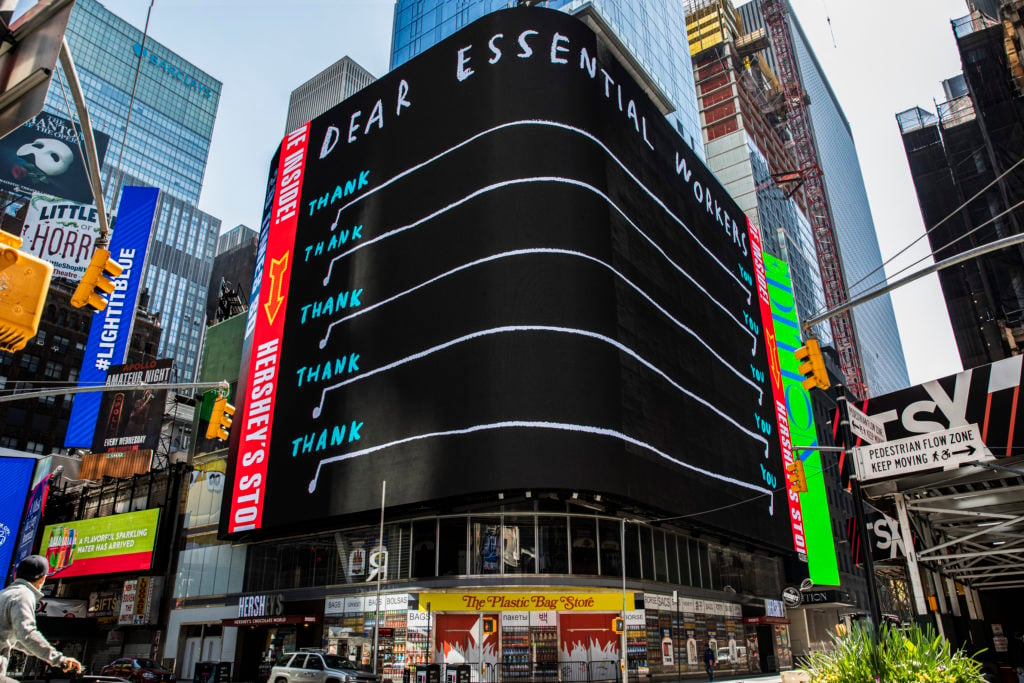
Christine Sun Kim for “Messages for the City.” Photo by Maria Baranova courtesy Times Square Arts.
Lockdown presented an opportunity to slow down and focus on what Kim calls “radical self-care,” or self-preservation. But it also presented problems of its own. Beginning in March, everyone’s faces were half-covered, making it impossible to be able to tell if someone was trying to address her. Within the space of one week, Kim lost access to a vital communication resource.
She adapted eventually, but folded into that was yet another challenge—Kim, who is Korean-American, “started to feel that people were staying away from me because I am Asian,” she told me. “Suddenly, I started to not feel as safe. If you don’t feel safe in a place you call home, that’s traumatic.”

Christine Sun Kim Deaf Traumas (2020). Courtesy of the artist and
François Ghebaly, Los Angeles. Photo: Paul Salveson
There have been widespread reports of an uptick in xenophobia this year in Kim’s adopted home country, which many say has laid bare an undercurrent of racism that has always existed in Germany.
The artist began to process this trauma through her drawings, many of which are on view in the François Ghebaly show. The title, “Trauma, LOL,” is exemplary of Kim’s slyly profound humor—the acronym for “laugh out loud” also symbolizes an awkward response, a sort of coping mechanism.
Kim is fascinated with phrases that can have multiple definitions, that can be translated and mistranslated by different audiences. Her new works illustrate the complicated nature of trauma within Deaf experience—something she says is “layered” due to a lifetime of living in a “hearing world.”
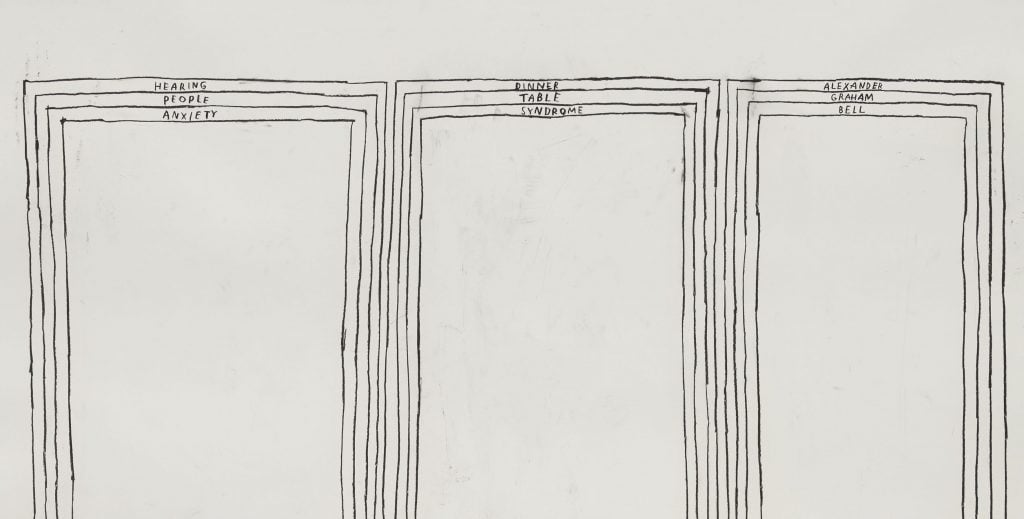
Christine Sun Kim Three Tables I (Individuals) (2020). Courtesy of the Artist and
François Ghebaly, Los Angeles. Photo: Paul Salveson
In our video call, Kim showed me the ASL sign for trauma—a scratch gesture across the forehead. It also means, literally, “scratch”—as in, a mark on a wall or a plate. “The sign is to mark a scratch on your head, and so it’s a scar on the brain, meaning that trauma is usually in your head and manifests physically,” she explained.
Then, she made the sign again, but modified it: with one hand, she made the scratch gesture across her forehead, and with the other, across her heart. “This year, the sign has become more specialized, and now there are two signs that people are doing to indicate ‘trauma’ and the connection between the head and the heart,” she said.
As is often the case, some languages have more astute ways to express a certain feeling (German, for example, has “schadenfreude,” the word for taking pleasure in another’s pain.) The ASL for trauma seems to embody the essence of the word—and the world this year—much more poignantly than English.
Kim’s list of traumas, compacted by the events of this year, is long, complex, and intersectional. “When we see hearing people oppress us, that’s a behavior we learn and we then oppress ourselves,” she said. “On top of that, the Deaf community is always struggling with access to resources, to education. Then you have lifelong consequences that impact Deaf people’s health, education, and employment.”
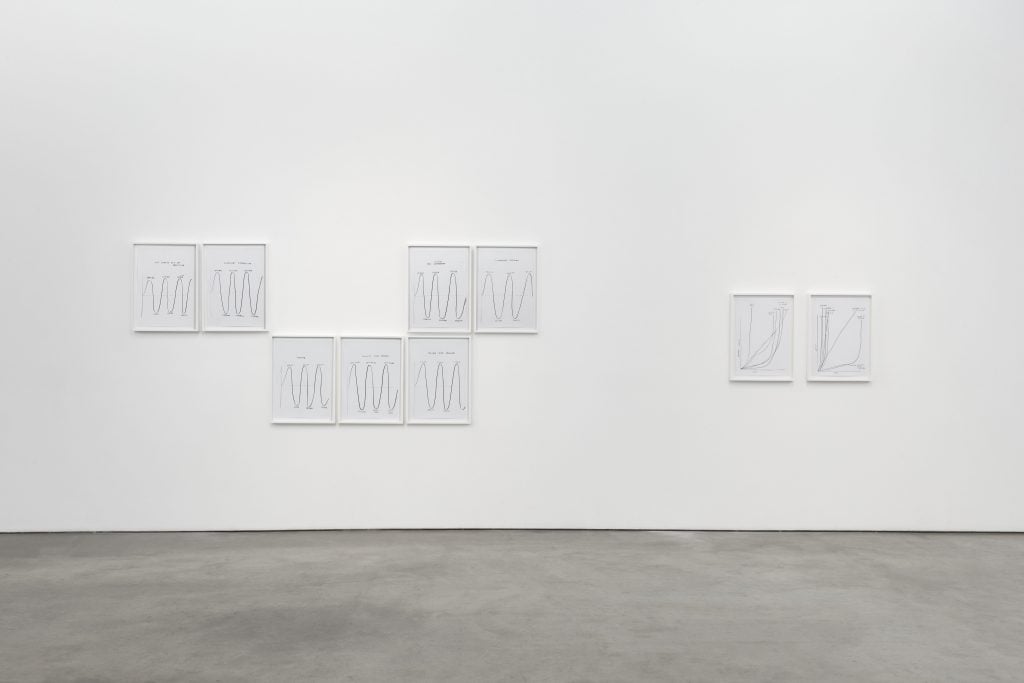
Christine Sun Kim, Trauma (2020). Courtesy of the Artist and
François Ghebaly, Los Angeles. Photo: Paul Salveson
I asked Kim if the art world is as progressive as it might brand itself to be when it comes to accessibility. She admits that the situation has improved because awareness has improved—but also because she has become more clear about her needs.
She encountered ableism not infrequently as a young artist in New York, particularly in cases where people were unwilling to dedicate money toward accessibility. “People were quite dismissive,” she recalled. “A lot of the attitudes were like, ‘You’re lucky to be here. You should be thankful we’re showing you.’ So I really had to hustle—living in New York taught me well, right?”
A watershed moment came when she received a fellowship with TED in 2013 (she returned again in 2015). The experience set the standard for what she knew she deserved: three full-time interpreters for the conference, day and night. (Interpreters need to switch off due to the demanding nature of their work, and they often work in pairs.) “In arts institutions, I will sometimes only get one interpreter for two days because that’s all they can afford,” she said.
The gap between these experiences was, in part, what led Kim to her data visualizations. “How can I express my Deaf experience, my Deafness, my Deaf stories? How can I share that?” she asked. “I want to be able to maintain my clear voice. A lot of times hearing people have the privilege to be misunderstood, but I can’t afford to be misunderstood, because if I am misunderstood that equals lost opportunities, a loss of my rights.”
“Trauma, LOL” is on view at François Ghebaly through January 9, 2021.